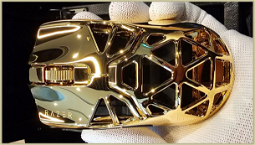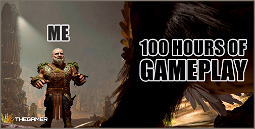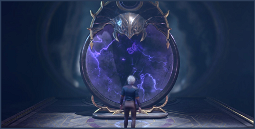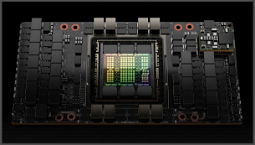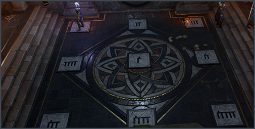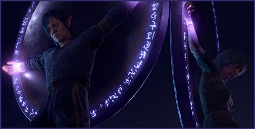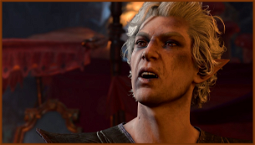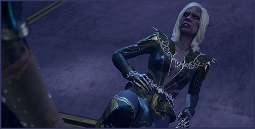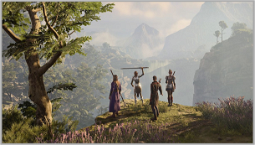Get Started with the Classic Infinity Engine Titles
So you’ve played BG3 and you want to try the original games. The originals are over two decades old now, but they’re still playable and enjoyable today. The first two games have a different look and feel from BG3, with limited feedback and presentation.
If you’re a newcomer, you’ll need to get used to real-time with pause combat and micromanaging your party with the less elegant UI of the originals. But don’t let that put you off. The depth of character building, encounter design, and magical artifacts still shine through. You just need to be cognizant of the differences between the games.
Baldur’s Gate 1 and 2 have less reactivity than BG3, but they still offer a similar swashbuckling fantasy experience. That said, this series has a lot of history, and the first two games have plenty of unique aspects to them that might throw you off at first. So if you’re looking to start at the beginning, here’s everything you need to know.
Baldur’s Gate 1 and 2 have less tooltips than BG3, so we highly recommend using online guides or the manual PDF if you’re playing for the first time. The game is still playable without them, but you’ll be more comfortable if you have them to hand.
Classes
The original games have less reactivity than BG3, but you’ll still find character building, encounter design, and the quality of the magical artifacts. Many of the Enhanced Edition improvements are worthwhile for newcomers, such as quality of life changes and better compatibility with major mods. The console and tablet/smartphone ports are also excellent, so you can play your favorite Infinity Engine game on the go.
Here is a breakdown of each class in Baldur’s Gate:
Baldur’s Gate 2 has a smaller but more developed cast, while BG1 has a wider array of companions. The Enhanced Editions expand romance options, but you’ll need mods if you want the original cast. BG2 has loyalty quests, interjections, and romance options, while BG1 lacks these features.
Companions in BG2 have unique voice acting, while in BG1 they have set lines that repeat. The Enhanced Editions expand romance options, but you’ll need to use mods for the original cast.
Races
Understanding how THAC0 works is important for playing Baldur’s Gate. THAC0 is the roll needed to hit an enemy with an Armor Class of 0. In AD&D, lower AC is better, unlike in BG3 and Baldur’s Gate 2, where higher AC is better. Each character has a THAC0, which works out their chance to hit an enemy with different AC values.
You’ll also notice that Baldur’s Gate has a different approach to attributes. Unlike in BG3 and 2, where you have your attributes and then roll for your abilities, in the original games, you have pools of points that are rolled during character creation.
Each race has different attribute modifiers, which affects your rolls to determine your attributes. For example, if you roll a high Strength, then you will have high Strength, but if you get a low Strength, then you might have low Strength. In addition, Strength has subdivisions between 18 and 19, affecting overall damage and THAC0.
You’ll notice that some races have better bonuses to hit than others, which means there are melee characters and spellcasters in Baldur’s Gate. While there are non-human races, such as dwarves, half-orcs, and gnomes, there are no elves in the first game. Human, half-elf, and gnome are the only playable races in the original game.
Baldur’s Gate 2 has more races, including drow and half-elves. The Enhanced Editions also add dwarves, half-orcs, and gnomes, but they’re also available through mods. Sora’s guide on the best Baldur’s Gate races has more information on why these races are top picks.
Attributes
The attributes work differently in Baldur’s Gate. Instead of picking from a list of powers, you’ll have pools of points that are rolled during character creation. Each race has different attribute modifiers, which affects your rolls to determine your attributes. For example, if you roll a high Strength, then you will have high Strength, but if you get a low Strength, then you might have low Strength. In addition, Strength has subdivisions between 18 and 19, affecting overall damage and THAC0.
How do attributes work in BG1? That’s a good question. There are no tooltips in the original, so it’s difficult to figure out what the base attributes actually do beyond influencing your starting roll.
Each class has different minimum requirements for each attribute. For example, melee characters benefit from high Strength, Dexterity, and Constitution. Likewise, spellcasters need high Intelligence and Wisdom.
Races
Baldur’s Gate 1 and 2 have more races than BG3, but the Enhanced Editions add dwarves, half-orcs, and gnomes. You can find more information on each race in Sora’s guide on the best Baldur’s Gate races, but the best option is human or half-elf, which have no attribute or ability penalties. If you’re playing BG1, you’ll have to make do with half-elves, who have a -1 penalty to Dexterity.
Here is a breakdown of each race:
Sorcerers and Mages are fun classes to play, and having an arcane spellcaster in your party is important. You’ll notice that they have fewer hit points and a lower strength score than their melee counterparts. This forces you to be more tactical with these characters, as they can’t simply tank the way that a fighter or barbarian can.
Baldur’s Gate has a few stats that aren’t covered in the other games. For example, thieves have their own ability score, Detect Traps, which can be improved by training.



